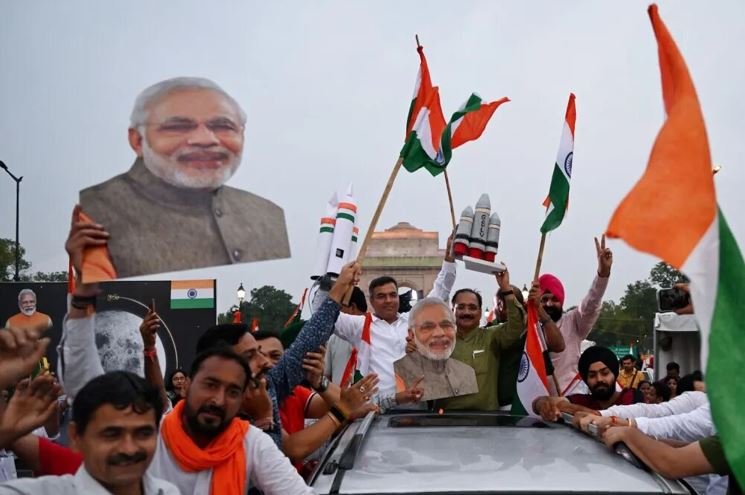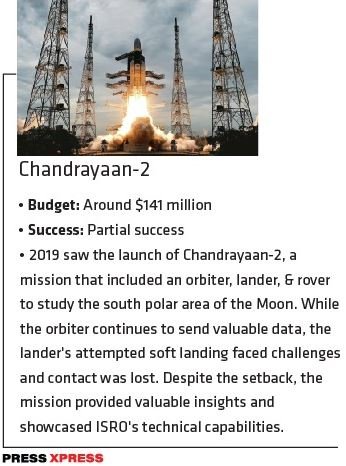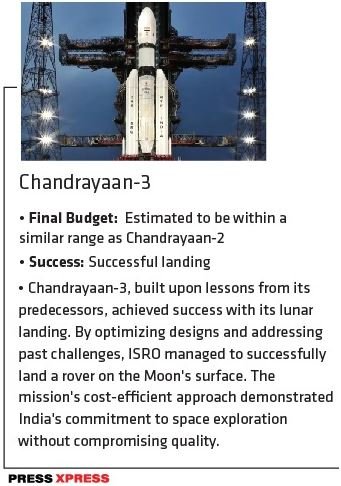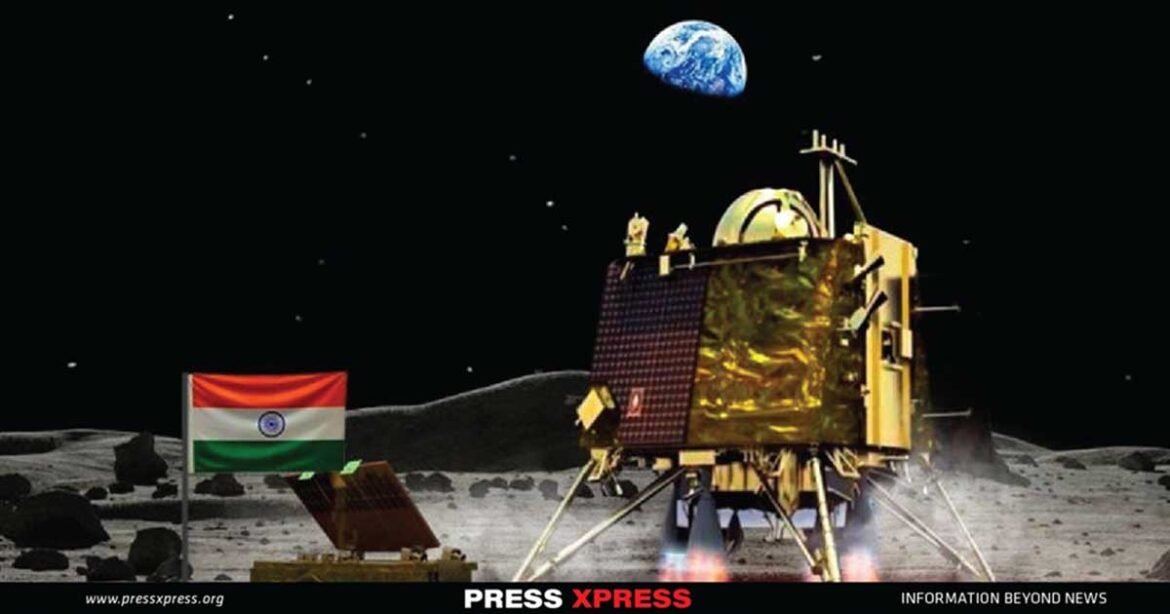India achieved a major victory for both its domestic space program and for global efforts to study the Moon when Chandrayaan-3 landed.
“This victory goes to all of humanity”
On Wednesday, the Chandrayaan-3 spacecraft smoothly touched down on the lunar south pole, making India the fourth nation to do so. No other country has set foot on that region of the moon. The Chandrayaan-3’s trajectory, which was announced more than a month ago and launched from southern India, has captured Indians’ attention and dominated news coverage for days.
The impact of this success for Indians all over the world is enormous. Nearly traveling 240,000 miles from earth, ISRO has accomplished a huge success. Hundreds of satellites have been launched by India’s space program since its inception in the 1960s. The Chandrayaan-1 mission in 2008 verified the existence of craters on the south pole of the moon that contain ice, according to experts. But in 2019, an earlier attempt to make a smooth landing on the lunar surface ended in failure.
You can also read: Russian House celebrates International Day of Human Space Flight
The lunar landing marks India’s strong presence on the international stage and clearly benefits Indian prime minister Narendra Modi politically. Even while India’s ambitions to join the Nuclear Suppliers Group and become a permanent member of the United Nations Security Council remain unfulfilled, it is now one of only China, Russia, & the United States’ members of the much smaller club of nations that have visited the moon. Israel, Japan, Russia, & the United Arab Emirates are just a few of the hopefuls who have attempted but failed to land on the moon’s south pole.
With meticulous planning, perseverance, and advanced technology, India’s Chandrayaan-3 mission has not only achieved its lunar goals but has also set a precedent for other nations to follow. Let’s delve into the details of this remarkable achievement and explore how it can inspire the global scientific community.

The Previous Cost of Moon Landing Attempts by India
In the past, India’s moon landing efforts were highlighted by the Chandrayaan-2 mission, which unfortunately faced challenges during its landing phase. Although the disaster, the mission produced insightful and useful data. The cost of Chandrayaan-2 was estimated at approximately $141 million, a reasonable investment given the complexities of space exploration.
The Final Moon Landing Cost of India
India’s determination to achieve lunar success was evident in the Chandrayaan-3 mission. While the exact cost of Chandrayaan-3 is not yet officially disclosed, experts anticipate that it could be within a similar range as previous. This cost-efficient approach showcases India’s commitment to advancing its space program without excessive financial strain.
India’s Most Important Steps to Achieve Lunar Success
India’s triumphant moon landing can be attributed to several crucial factors that contributed to the mission’s success:
- Technological Innovation: The Indian Space Research Organization (ISRO) displayed remarkable technological prowess by refining its lander and rover systems, incorporating lessons learned from the Chandrayaan-2 mission. This dedication to improvement played a pivotal role in achieving a smooth landing.
- Precision Planning: India’s space agency meticulously planned the Chandrayaan-3 mission, addressing the issues faced during Chandrayaan-2’s landing attempt. A thorough examination of potential challenges and solutions enabled ISRO to optimize its strategies for a successful landing.
- Global Collaborations: ISRO collaborated with international space agencies, fostering knowledge exchange and pooling resources. Collaborative efforts aid in overcoming obstacles and provide a platform for sharing expertise, ultimately enhancing the likelihood of mission success.
- Public Support and Enthusiasm: The unwavering support of the Indian public and their enthusiasm for space exploration has been a driving force behind ISRO’s achievements. This positive energy fuels the country’s space aspirations and underscores the significance of such endeavors.
Budgets and Successes



Chandrayaan-1 and 2’s Setbacks
Chandrayaan-1 encountered no major setbacks and significantly exceeded its planned operational life. However, Chandrayaan-2’s Vikram lander faced issues during its final descent, leading to a loss of communication. These challenges underscore the complexities of space missions and the unpredictable nature of exploration.
Chandrayaan-3’s Success
Chandrayaan-3’s success can be attributed to a combination of factors. By learning from Chandrayaan-2’s experiences, ISRO fine-tuned its designs, systems, and operational strategies. The organization’s determination to overcome setbacks, coupled with cost-effective engineering, played a crucial role. Chandrayaan-3’s collaborative approach and international partnerships also contributed to its triumph.

The last fall was witnessed by millions of people, including Indian PM Narendra Modi, who correctly stated: “This victory goes to all of humanity.” Across many centuries, India’s scientists and engineers have unquestionably accomplished great things.
At the end, it is must to say that India’s lunar landing achievement with the Chandrayaan-3 mission is undeniably a stellar victory for both the nation and the global scientific community. Through meticulous planning, innovative approaches, and the spirit of perseverance, India has demonstrated that ambitious goals can be achieved even in the face of adversity. As the world watches in awe, India’s accomplishment paves the way for future lunar endeavors and serves as an inspiration for nations to come together in the pursuit of scientific excellence.


